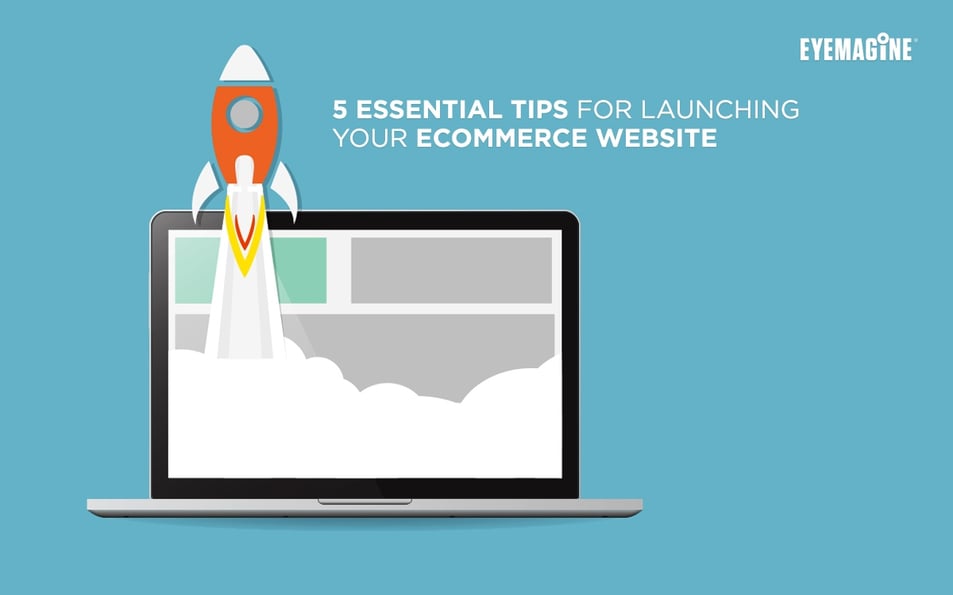
eCommerce is growing each year and showing no signs of slowing. Last Black Friday, Adobe broke a record with $3.34 billion in online sales. That was a 17.7% increase over the previous year.
As the market floods with high-quality merchants and selective buyers, it is more important than ever to exceed your customer's expectations with your eCommerce website.
When done correctly, launching a new eCommerce website can increase average order values, boost customer lifetime values, and increase conversion rates, resulting in more revenue. Here are five tips and best practices for launching your new eCommerce website.
Tips For Launching An eCommerce Website
1. Optimize For Search Engines
Search Engine Optimization (SEO) is a commonly heard phrase in the world of eCommerce. Essentially, your eCommerce website must be easily understood by major search engines.
When launching an eCommerce website, you have to ensure that the new site will retain the goodwill that your old website built with major search engines. If your website launch results in a major traffic loss it will mean a loss in revenue.
Here are a few steps you can take to avoid traffic loss:
- Use 301 redirects to map all of the old eCommerce website URLs to the new website URLs.
- Use proper heading tags.
- Migrate META content.
- Ensure all images have proper ALT tags.
You should also be using an SEO tool like Moz or Alexa to discover new SEO opportunities.
Sometimes a small hiccup in traffic and sales is inevitable, depending on each search engine’s timeframe for re-indexing the new website, so plan your launch during your slowest month, year-over-year, to minimize a negative impact.
2. Complete Load Testing
Do you know how many simultaneous visitors your eCommerce website can support while maintaining a reasonable page load time? If not, you’re in trouble when your site receives its next spike in traffic.
Measure your website’s performance to learn how many visitors it can support and how many orders it can process while other visitors are shopping.
There are open source tools like Apache JMeter and Apache Bench that can produce load testing results that simulate traffic spikes.
You will want to simulate traffic to a resource-intensive page, like adding a product to cart and checking out. Further software development may be necessary to setup scripts that simulate these processes.
Here are some key performance indicators to examine:
- Page load time
- Server load
- Database locks and/or timeouts
When you push the eCommerce website to its limit, note how many visits and the concurrency at which the page loads exceed an acceptable amount of time. This will be your eCommerce website’s threshold for handling spikes. Compare these metrics to spikes displayed in your Google Analytics.
3. Optimize For Performance
After load testing the eCommerce website, make changes that improve its ability to serve your customers.
Server Bandwidth
Increasing server memory and CPU count is a simple optimization that can lead to fast results. These improvements can become quite costly, depending on how much memory and CPU cores are added.
Deploying the eCommerce application to an autoscaling environment may optimize costs automatically.
Application Bandwidth
Improving the application may result in increased performance. Use tools like an application profiler to measure the bottlenecks in the application. In laymen's terms, the profiler will tell your development team the slowest part of the application during a high load.
Application optimizations will benefit your eCommerce website regardless of the server bandwidth, making this a long-term investment.
4. Ensure Cross-Browser & Cross-Device Compatibility
Test your new eCommerce website across multiple browsers and devices. Google Analytics can tell you about your historic users’ devices and browsers, but it can’t tell you about the users that have yet to visit your eCommerce website.
Be prepared to handle visitors using the latest and greatest in technology. Use tools like Browser Stack, that offer a range of browsers and devices to use as simulators, so you can ensure that your new visitors will have a great user experience (UX) on your website.
Major search engines are trained to pick up on user experience errors and will penalize your website’s rankings.
SEE ALSO: Navigating the Worlds of eCommerce Website Platforms
5. Test In A Pre-Production Environment
A common practice among enterprise eCommerce retailers and IR 1,000 merchants is to simulate the new eCommerce website in a pre-production environment. Deploy the eCommerce website to an environment that will become the new production environment.
Conducting all tests in a pre-production environment will smoke out hidden bugs that could otherwise surprise your team after a deployment or migration.
Conduct all load tests, user acceptance testing, and user interface tests on the pre-production environment. After each issue passes quality assurance and regression testing, you won’t have to go through another deployment.
“An ounce of prevention is worth a pound of cure.” - Benjamin Franklin
Follow each of these planning and prevention strategies for your new website launch. Incorporating these steps into your plan will help you minimize a dip in traffic and revenue when launching a new eCommerce website.
If you have any additional questions, or need help launching a new eCommerce website, click here to talk to an expert today.

